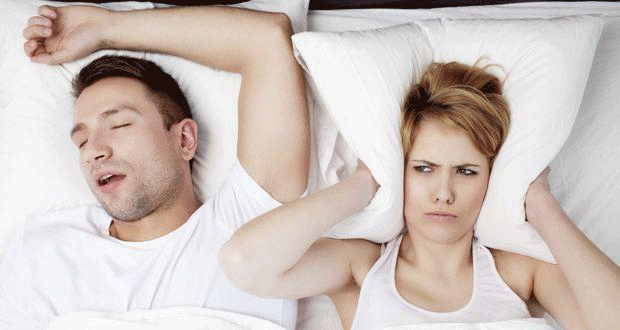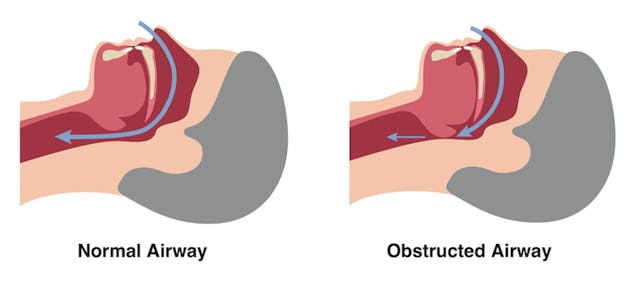
What is Sleep Apnea?
Sleep apnea is a common condition in the United States. It can occur when the upper airway becomes blocked repeatedly during sleep, reducing or completely stopping airflow. This is known as obstructive sleep apnea. If the brain does not send the signals needed to breathe, the condition may be called central sleep apnea.
Healthcare providers use sleep studies to diagnose sleep apnea. They record the number of episodes of slow or stopped breathing and the number of central sleep apnea events detected in an hour. They also determine whether oxygen levels in the blood are lower during these events.

Causes
Sleep apnea can be caused by a person's physical structure or medical conditions. These include obesity, large tonsils, endocrine disorders, neuromuscular disorders, heart or kidney failure, certain genetic syndromes, and premature birth.
Age
Unhealthy lifestyle habits
Drinking alcohol, smoking, and overweight or obesity can increase your risk for sleep apnea.
Family history and genetics
Race or ethnicity
Screening and Prevention
To screen for sleep apnea, your doctor will review your medical history and symptoms. To prevent sleep apnea, your doctor may recommend healthy lifestyle changes.
Screening for sleep apnea
Healthy lifestyle changes to prevent sleep apnea
Look for
Signs, Symptoms, and Complications
Common sleep apnea signs and symptoms are snoring or gasping during sleep; reduced or absent breathing, called apnea events; and sleepiness. Undiagnosed or untreated sleep apnea prevents restful sleep and can cause complications that may affect many parts of your body.
Signs and symptoms
Common signs of sleep apnea:
Common symptoms of sleep apnea:
Did you know that sleep apnea symptoms may be different for women and children compared with men?
Complications
Sleep apnea may increase your risk of the following disorders:
Did you know that sleep apnea can cause inflammation and lead to complications?
Look for
Diagnosis
Your doctor may diagnose sleep apnea based on your medical history, a physical exam, and results from a sleep study. Before diagnosing you with sleep apnea, your doctor will rule out other medical reasons or conditions that may be causing your signs and symptoms.
Medical history
To help diagnose sleep apnea, your doctor may consider the following:
Whether you have complications of undiagnosed or untreated sleep apnea, such as atrial fibrillation, type 2 diabetes, or hard-to-control high blood pressure
Physical exam
During the physical exam, your doctor will look for signs of other conditions that can increase your risk for sleep apnea, such as obesity, large tonsils, narrowing of the upper airway, or a large neck circumference. A neck circumference greater than 17 inches for men or 16 inches for women is considered large. Your doctor may also look at your jaw size and structure, the size of your tongue, and your tongue's position in your mouth. Your doctor will check your lungs, heart, and neurological systems to see whether you have any common complications of sleep apnea.
Sleep studies
To diagnose sleep apnea or another sleep disorder, your doctor may refer you to a sleep specialist or a center for a sleep study. Sleep studies can be done in a special center or at home. Studies at a sleep center can:
Your doctor may be able to diagnose mild, moderate, or severe sleep apnea based on the number of sleep apnea events you have in an hour during the sleep study.
Did you know that sleep studies can help determine which type of sleep apnea you have?
Your doctor may order the following tests to help rule out other medical conditions that can cause sleep apnea:
Your doctor will also want to know whether you are using medicines, such as opioids, that could be affecting your sleep or causing breathing symptoms of sleep apnea. Your doctor may want to know whether you have traveled recently to altitudes greater than 6,000 feet, because these low-oxygen environments can cause symptoms of sleep apnea for a few weeks after traveling.
Reminders
Treatment
If you are diagnosed with sleep apnea, your doctor may make recommendations to help you maintain an open airway during sleep. These could include healthy lifestyle changes or a breathing device such as a positive airway pressure (PAP) machine, mouthpiece, or implant. Talk to your doctor. Depending on the type and severity of your sleep apnea and your needs and preferences, other treatments may be possible.
Healthy lifestyle changes
To help control or treat your sleep apnea, your doctor may recommend that you adopt lifelong healthy lifestyle changes.
Breathing devices
A breathing device, such as a CPAP machine, is the most commonly recommended treatment for patients with sleep apnea. If your doctor prescribes a CPAP or other breathing device, be sure to continue your doctor-recommended healthy lifestyle changes.
Mouthpieces
Mouthpieces, or oral appliances, are typically custom-fit devices that you wear while you sleep. There are two types of mouthpieces that work differently to open the upper airway. Some hybrid mouthpieces have features of both types.
Your doctor may prescribe a mouthpiece if you have mild sleep apnea or if your apnea occurs only when you are lying on your back. To get your mouthpiece, your doctor may recommend that you visit a dentist or an orthodontist, a type of dentist who specializes in correcting teeth or jaw problems. These specialists will ensure that the oral appliance is custom fit to your mouth and jaw.
Implants
Implants can benefit some people with sleep apnea. Some devices treat both obstructive and central sleep apnea. You must have surgery to place an implant in your body. The Food and Drug Administration has approved one implant as a treatment for sleep apnea. The device senses breathing patterns and delivers mild stimulation to certain muscles that open the airways during sleep. More research is needed to determine how effective the implant is in treating central sleep apnea.
A nerve stimulator can also treat sleep apnea. This treatment also involves surgery. A surgeon will insert a stimulator for the hypoglossal nerve, which controls tongue movement. Increasing stimulation of this nerve helps position the tongue to keep the upper airway open.
Therapy for mouth and facial muscles
Children and adults with sleep apnea may benefit from therapy for mouth and facial muscles, known as orofacial therapy. This therapy helps improve tongue positioning and strengthen muscles that control the lips, tongue, soft palate, lateral pharyngeal wall, and face.
Surgical procedures
You may need surgery if you have severe obstructive sleep apnea that does not respond to breathing devices such as a CPAP machine, or that is caused by visible obstruction to the upper airway, perhaps due to large tonsils. Possible surgical procedures include:
If surgery is considered as a possible treatment, talk to your doctor about the different types of surgical procedures, the risks and benefits of the procedures, potential discomfort, and the recovery time you will need after surgery.